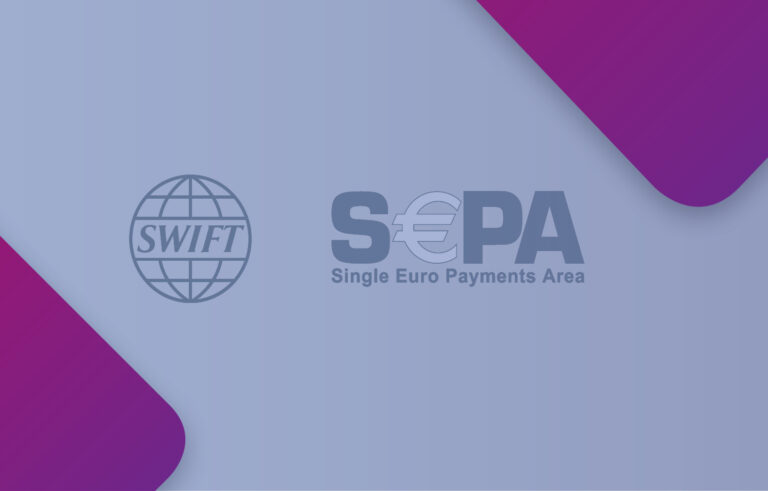
Keeping a bank account is not an absolute must, if you have an opportunity to create an account in a payment system and start your own digital wallet for receiving payments for goods and services.
In this article, Bilderlings Pay covers the five core advantages of innovative payment instruments for retailers.
Customer experience transformation is an inevitable trend under the influence of new technological solutions – that is a fact. Retailers implement new settlement methods that make the purchasing process more comfortable for customers than ever before. One of the most prominent uprising trends in Europe is the usage of e-wallets – retailers’ own digital payment wallets.
As distinct from payment services, traditional financial and credit structures are more inertial, as it is harder for these to remain flexible as required by the current demands of the market. A bank’s role shifts towards that of an intermediary in the dynamically changing environment of financial technologies, being focused at servicing basic elements, such as bank accounts and payment cards.
An ever-increasing share of European consumers tends to shift from conventional payments with plastic cards towards online payments through smartphone applications.
Development of this segment of FinTech service directly correlates with the electronic commerce development level, consumer income level and the competitive environment in retail sectors of different countries.
According to the data provided by Ecommerce Europe, an average Western European resident spends about 2 492 Euros a year online, whereas in the Central and Eastern Europe these figures are, respectively, 1 055 and 629 Euros a month.
At that, the gap closes thanks to the growth of the new mobile generation: young people find it easier to pay by running a payment application on their gadgets than with a bank payment – at that, the percentage of such people is going to grow continuously due to natural reasons, and the average income level of the “gadget generation” is going to increase imminently.
Global experience
Walmart, the world’s largest retailer, has commenced the test run of its digital wallet, Scan & Go. The principle of operation is simple: the buyer scans the bar codes of the goods to be purchased, and the total amount of the purchase is deducted from the buyer’s account through a mobile payment service smartphone application upon leaving the shop area.
Large European retailers implement such solutions, which tend to improve and become ever more comfortable and sought-after by customers. The Starbucks coffee house network reports that a 25% share of all transactions is carried out by means of mobile payments.
This includes a 6% share of payments through the Starbucks Order and Pay, a cart-and-wallet mobile application that combines the functions of ordering products from the menu with payment facilities.
Advantages of e-wallets as compared to traditional payment methods are too obvious to be ignored. These are:
- Lesser commission fees
As the payment card issuer and transaction operator, the bank charges a commission fee for its services, which is payable by retailers. Amounts of commission fees may differ, but usually the bank’s margin depends on the turnover of a specific retailer – the greater is the sales volume, the larger are the fees. In order to make their business more lucrative, retailers face the need to reduce transaction fee costs.
One of the solutions in this instance could be the issuance of one’s own branded payment card. This is a chip card or magnetic card used to pay for purchases made within a single network, the so-called closed-loop card, which can also be used as a loyalty card, a credit card, a savings card, a discount card, etc. – a local version of Visa and MasterCard. Consumers must use these cards frequently in order for this scheme to become more profitable for a retailer. Costs of card emission also have to be taken into account.
A digital wallet is very much like this card, the difference being that this is an electronic version that a customer can download and install on his or her smartphone in just a few clicks.
Thus, the retailer saves the costs of issuing a plastic card, whilst retaining the full functionality of this solution. This also implies lesser transaction fees paid to the bank, which can potentially entail better competitive performance of one’s goods and services.
Sales and turnover are expected to increase in this case, even though the average receipt total could be less. Digital wallet applications may be weaved with various customer loyalty stimulation programs, such as campaigns, discounts, bonuses, etc., which also improves conversion in retail trade.
- The purchasing process is changing
Electronic wallets allow retailers to implement and use new technologies, such as augmented reality and chat bots; these were addressed in earlier articles by Bilderlings Pay. Service development is a good strategy to attract new customers and increase the loyalty of existing ones. Apart from that, a dedicated e-wallet allows a retailer to develop unique customer-oriented offers through the analysis of customer preferences.
A single mobile application combines a number of features, such as overdraft, gift codes, loyalty programs, bonuses, coupons – at that, a customer can pay the purchase with any resources available, without regard for fine points. Chat bots and personal trusted shopping agents that recommend a specific purchase based on the consumer’s habits and remind the user to by ice-cream for his children and flowers for her wife – this is what tomorrow’s retail looks like.
- Purchase insensibility
The second golden rule for a retailer, following the maintenance and improvement of profitability levels, is the creation of maximum comfort for the buyer. An ideal purchase transaction is the one that goes unnoticed by the customer.
According to the statistics, 38% of Europeans would be willing to opt out of buying anything due to a long queue, whereas 86% of customers feel cognitive stress while standing in the checkout line. All it takes to make a payment through an e-wallet application is just a few seconds and touches – these solutions save one’s time and nerve by eliminating the need to stand in line.
- Additional cost saving
A digital payment from an e-wallet through a payment service is a legitimate proof of a transaction, just like a printed cash receipt. This could be a warranty policy, post-warranty, evidence for claims, etc.
Development of such technologies as the RFID electronic tag brings about the prospect of saving the costs of printed materials and tons of paper currently used for the production of leaflets, billboards and coupons.
Payments through mobile applications are also going to reduce the costs of hired personnel for retail business owners – so many checkout cashiers and cash-in-transit providers will not be required any more.
- Safety first
Banks – more specifically, bank account money – are the primary target for cyber criminals. Many large retailers have negative experience resulting from hacking, compromise and theft of data. However, total retailers’ losses from hacker attacks amount to less than 4 million Euros. What are the security benefits of electronic wallets?
Personalised retail payment solutions can be based on the tokenization technology (replacement of traditional card numbers with unique dynamic identifiers – tokens), which is a more reliable means of data protection than two-factor authentication.
Subscribe to our Facebook profile to stay aware of the latest news in the world of electronic commerce, and feel free to contact the experts of Bilderlings Pay if you need to set up a payment receipt service; we will gladly pick the best offer for you.






